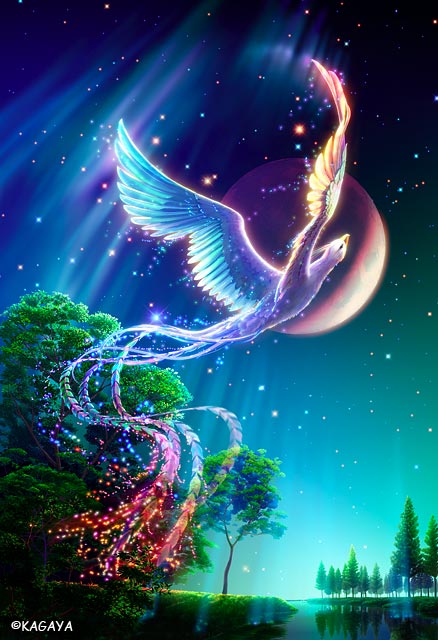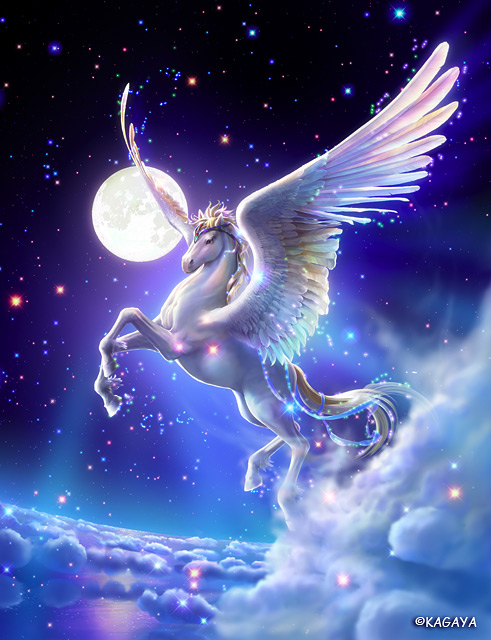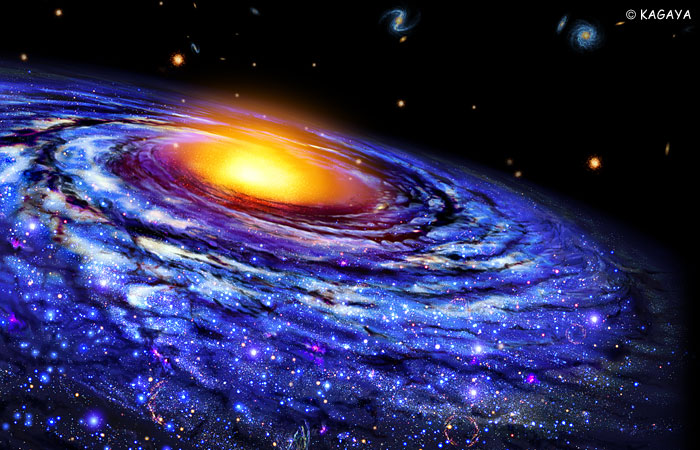-ћетки
"едро" "правое дело" krievija nasa polska абхазский регион агресси€ россии в грузию антисемитизм апсуйские террористы бредо руссо великобритани€ видео выборы гаага геноцид гозман грузи€ евраби€ звезды звери злокачественные новообразовани€ идиоты израиль импери€ зла имперска€ ложь имперские игры иран исконно-посконное искусство ислам исламский терроризм исламский фашизм исламский экстремизм календарь катастрофы коммунизм коммунофашизм космос краснокоричневые кризис криминал криминальный ислам криминальный сепаратизм культ личности обамы культ личности путина леваки либеразм лужков маразм медведев море москва наса нато нацизм национал-социализм обсе оккупаци€ грузии россией осетинские террористы осуждение россии палестинский терроризм польша правы только правые преступлени€ коммунизма природа провокаторы психологи€ птицы путен путин радикальна€ оппозици€ российска€ арми€ российское лицемерие росси€ рпц русский фашизм самачабло совок сталин стихии сша терроризм тесты толерасти€ ублюдки уебурашка украина фальсификации фото фюреры и харизматики хамас хуссейн обама цветы цхинвальский регион черный расизм шариковы п.п. шпионаж экономика экстремизм юмор
-ѕоиск по дневнику
-ѕодписка по e-mail
-—татистика
«аписи с меткой звезды
(и еще 47984 запис€м на сайте сопоставлена така€ метка)
ƒругие метки пользовател€ ↓
"едро" "правое дело" krievija nasa абхазский регион агресси€ россии в грузию антисемитизм апсуйские террористы бредо руссо гозман грузи€ звери идиоты израиль имперска€ ложь имперские игры ислам исламский терроризм исламский фашизм коммунизм космос краснокоричневые кризис криминал криминальный сепаратизм леваки маразм наса оккупаци€ грузии россией осетинские террористы палестинский терроризм преступлени€ коммунизма природа провокаторы птицы путин радикальна€ оппозици€ российское лицемерие росси€ русский фашизм совок сша терроризм ублюдки фото фюреры и харизматики хуссейн обама цхинвальский регион экстремизм юмор
„ерные дыры, нейтронные звезды и борьба с зеленым дь€волом |
ƒневник |

Ёто черна€ дыра в центре нашей галактики. ¬еро€тно, в ней исламский алах сидит. кто еще! ¬ обнимку с красными черт€ми.

Ќейтронна€ звезда RX J0822-4300, показанна€ на врезе, движетс€ со скоростью около 4,8 миллиона километров в час.
ѕо склонности к волюнтаристскому объединению тем (в смысле по недостатку времени) в продолжение даю не менее вечную тему, чем галактики, - борьбу с исламизмом.
¬ надежде, что эта тема, увенчавшись победой, вечной быть как можно скорее перестанет. » только так.
ампани€ ѕартии датского народа проти мечетей
ѕарти€ датского народа (PPD, крайне правые), существенна€ парламентска€ опора власти, начала в среду кампанию в медиа против строительства в ƒании мечетей, призыва€ избирателей воспротивитьс€ этим "исламским храмам".
ѕарти€ выставила в нескольких ежедневных газетах целую страницу, котора€ показывает √олубую мечеть в —тамбуле с куполом, над которым возвышаютс€ две сабли, которые добавила PPD, под заглавием "Ќет большим мечет€м в датских городах!"
ампани€ проводитс€ накануне муниципальных выборов 17 но€бр€ и после недавнего одобрени€ —оветом гражданского управлени€ опенгагена строительства первой мечети в ƒании, каковое решение PPD оспорила и затребовала нового голосовани€ 17 сент€бр€.
"“олько ѕарти€ датского народа голосовала против!" - подчеркивает этот плакат, ибо "деньги на финансирование мечети поступают, помимо прочего, от иранского террористического режима".
PPD предупредила о другой новой мечети, которую "оснуют через три года в опенгагене, а финансировать ее будет диктаторский режим —аудовской јравии". (хорватское информационное агентство HINA, www.slobodnadalmacija.hr/Svijet/ /i.ixnp.com/images/v6.7/theme/silver/palette.gif" target="_blank">http://i.ixnp.com/images/v6.7/theme/silver/palette.gif); background-color: transparent; visibility: visible; width: 14px; height: 12px; background-position: -1128px 0pt; background-repeat: no-repeat; text-decoration: none; vertical-align: top; display: inline;" class="snap_preview_icon" id="snap_com_shot_link_icon" alt="" />
/i.ixnp.com/images/v6.7/theme/silver/palette.gif" target="_blank">http://i.ixnp.com/images/v6.7/theme/silver/palette.gif); background-color: transparent; visibility: visible; width: 14px; height: 12px; background-position: -1128px 0pt; background-repeat: no-repeat; text-decoration: none; vertical-align: top; display: inline;" class="snap_preview_icon" id="snap_com_shot_link_icon" alt="" />
ѕарти€ датского народа (PPD, крайне правые), существенна€ парламентска€ опора власти, начала в среду кампанию в медиа против строительства в ƒании мечетей, призыва€ избирателей воспротивитьс€ этим "исламским храмам".
ѕарти€ выставила в нескольких ежедневных газетах целую страницу, котора€ показывает √олубую мечеть в —тамбуле с куполом, над которым возвышаютс€ две сабли, которые добавила PPD, под заглавием "Ќет большим мечет€м в датских городах!"
ампани€ проводитс€ накануне муниципальных выборов 17 но€бр€ и после недавнего одобрени€ —оветом гражданского управлени€ опенгагена строительства первой мечети в ƒании, каковое решение PPD оспорила и затребовала нового голосовани€ 17 сент€бр€.
"“олько ѕарти€ датского народа голосовала против!" - подчеркивает этот плакат, ибо "деньги на финансирование мечети поступают, помимо прочего, от иранского террористического режима".
PPD предупредила о другой новой мечети, которую "оснуют через три года в опенгагене, а финансировать ее будет диктаторский режим —аудовской јравии". (хорватское информационное агентство HINA, www.slobodnadalmacija.hr/Svijet/
 /i.ixnp.com/images/v6.7/theme/silver/palette.gif" target="_blank">http://i.ixnp.com/images/v6.7/theme/silver/palette.gif); background-color: transparent; visibility: visible; width: 14px; height: 12px; background-position: -1128px 0pt; background-repeat: no-repeat; text-decoration: none; vertical-align: top; display: inline;" class="snap_preview_icon" id="snap_com_shot_link_icon" alt="" />
/i.ixnp.com/images/v6.7/theme/silver/palette.gif" target="_blank">http://i.ixnp.com/images/v6.7/theme/silver/palette.gif); background-color: transparent; visibility: visible; width: 14px; height: 12px; background-position: -1128px 0pt; background-repeat: no-repeat; text-decoration: none; vertical-align: top; display: inline;" class="snap_preview_icon" id="snap_com_shot_link_icon" alt="" />09 сент€бр€ 2009
фото из [info="Geo_club"]
|
|
’удожник Ceslovas Cesnakevicius |
Ёто цитата сообщени€ ѕарфюмер [ѕрочитать целиком + ¬ свой цитатник или сообщество!]
’удожник Ceslovas Cesnakevicius
‘энтезийные пейзажи или, ≈сть ли жизнь на облаках? - так € бы назвал эту подборку.


„итать далее...
‘энтезийные пейзажи или, ≈сть ли жизнь на облаках? - так € бы назвал эту подборку.


|
ћетки: живопись звезды звери море музыка природа птицы |
— любовью к животным. ѕастельна€ живопись. Ћесли ’аррисон (Lesley Harrison) |
Ёто цитата сообщени€ —ќЅј »_ƒ≈Ќƒ»_Ќ№ё— [ѕрочитать целиком + ¬ свой цитатник или сообщество!]
— любовью к животным. ѕастельна€ живопись. Ћесли ’аррисон (Lesley Harrison)
—ћќ“–≈“№ ƒјЋ№Ў≈

«я родилась с любовью к животным. ажетс€, она у мен€ в крови», - так говорит о себе американска€ художница Ћесли ’аррисон (Lesley Harrison). Ћесли профессионально рисует вот уже в течение 33 лет. ќна сумела объединить любовь к животным со страстью к живописи, результатом чего стала прекрасна€ сери€ картин животных, изобража€ которых, художнице удаетс€ не только поймать дух каждого из них, но и передать зрителю индивидуальность, грацию и силу каждого животного.
|
ћетки: море живопись природа музыка звезды птицы звери |
Ћесные животные от художника Nigel Artingstall |
Ёто цитата сообщени€ BowHunter [ѕрочитать целиком + ¬ свой цитатник или сообщество!]
Ћесные животные от художника Nigel Artingstall
„итать далее...
| Ћесные животные от художника Nigel Artingstall |
|
|
|
ћетки: море живопись природа музыка звезды птицы звери |
’удожественный вопрос, художественна€ рекомендаци€ и несколько художников |
ƒневник |
 ¬опрос в следующем: будет ли читателей раздражать, если € юпик сделаю вот таким?
¬опрос в следующем: будет ли читателей раздражать, если € юпик сделаю вот таким?я поставила самый медленный интервал, чтобы не мельтешило.
≈сли не будет принципиальных возражений, € так и сделаю и орлов с драконами переведу в гифки и тем самым добавлю число юзерпиков, поставив еще какие-нибудь... даю справки по изготовлению. Ёлементарно, ¬атсон. ќдин сайт их вам изготовит сам. (“олько не каждый хостинг сохранит как гифки, будьте внимательны; и не свыше 100 пикселей в каждом измерении, как известно).
 –екомендаци€ заключаетс€ в ingko2006.
–екомендаци€ заключаетс€ в ingko2006.  √л€ньте его музыку, то есть потратьте 5 минут на каждую вещицу, их всего 3 или 4. —сылки в дневнике, короткие очень красивые вещицы. ќсобенно самый недавний позавчерашний, про квазары http://ingko2006.livejournal.com/39718.html. (Ќадеюсь, никто за рекламу не сочтет; без обид - у мен€ рекламы нет, не было и не будет; у кого она есть, мне нисколько не жалко. Ќо не у мен€).
√л€ньте его музыку, то есть потратьте 5 минут на каждую вещицу, их всего 3 или 4. —сылки в дневнике, короткие очень красивые вещицы. ќсобенно самый недавний позавчерашний, про квазары http://ingko2006.livejournal.com/39718.html. (Ќадеюсь, никто за рекламу не сочтет; без обид - у мен€ рекламы нет, не было и не будет; у кого она есть, мне нисколько не жалко. Ќо не у мен€).„уткость к современным ве€ни€м мне ни разу не свойственна, и если бы € могла, € бы одевалась как в веке 17 - 18... ну и так далее.
“ак что € в данном случае сама себе очень удивл€юсь. Ќо мне страшно понравилось...

Ёто не фото, а работа художника Nigel Artingstall.
“акже:




Nigel Artingstall, как и было сказано












http://sobakidendy-news.ru/post108163844/

Ёто художник Česlovas Česnakevičius (€ позволила себе исправить написание литовских имени и фамилии через с). ѕо мне, намного слабее …ерки. ћинимализм бывает от недостатка воображени€, не так ли?






≈ще немало его работ http://sobakidendy-news.ru/post109346117/

Ёта сери€ - нека€ иллюстраци€ к весьма многобуквенному вроде как психологическому этюду. я даже не пыталась одолеть, визуализируйте свое желание и т.п. ѕо мне, над желани€ми надо думать над практической реализацией, если уж наличествуют. ¬прочем, дело вкуса.






















“акже еще несколько работ, которые мне совсем не понравились - и длиинный этюд http://www.liveinternet.ru/community/811999/post109639073/

Ёто художница Lesley Harrison, пастель




“акже другие работы http://sobakidendy-news.ru/post109253226/
» хватит на сегодн€.
07 сент€бр€ 2009
|
ћетки: море живопись природа музыка звезды техническое птицы звери |
¬сего лишь ћлечный ѕуть |
ƒневник |
|
ћетки: звезды космос наса галактики nasa |
Ќесколько тыс€челетий назад. ¬ ста световых годах от земли. ‘ото дн€ NASA |
ƒневник |
 Ќебесное тело размером с Ћуну врезаетс€ в небесное тело размером с ћеркурий. Ќесколько тыс€челетий назад это произошло р€дом с юной зведой HD 172555, планеты которой до сей поры наход€тс€ на ранней стадии своего формировани€. ќколо 100 световых лет от «емли.
Ќебесное тело размером с Ћуну врезаетс€ в небесное тело размером с ћеркурий. Ќесколько тыс€челетий назад это произошло р€дом с юной зведой HD 172555, планеты которой до сей поры наход€тс€ на ранней стадии своего формировани€. ќколо 100 световых лет от «емли.Image Credit: NASA/JPL-Caltech

26 августа 2009
|
ћетки: планеты звезды космос наса галактики nasa |
‘ормаци€ звезд: ÷ефей ¬. ћожете туда отправить послание, кстати |
ƒневник |
 »ли если не совсем туда, то где-то р€дом:
»ли если не совсем туда, то где-то р€дом: јвстралийский научно-попул€рный журнал COSMOS уже начал прием сообщений дл€ инопланет€н. Ћюбой желающий может отправить послание обитател€м планеты Gliese 581d, обращающейс€ вокруг звезды Gliese 581, что на рассто€нии 20 световых лет от «емли.
письму предъ€вл€ютс€ следующие требовани€:
1. ƒлина сообщени€ не должна превышать 160 знаков с пробелами. (ѕересказать им всю свою жизнь вы еще успеете, потом, за чашечкой ча€, когда они прилет€т-таки с подарками в гости)
2. ѕисьма об€зательно должны быть на английском €зыке. (≈сли вы смотрели хоть один из космо-фантастических западных фильмов, то конечно же знаете, что все инопланет€не во всех галактиках общаютс€ “ќЋ№ ќ на английском!)
ќтправка писем запланирована на 25 августа. —ообщени€ будут переданы в космос при помощи осмического коммуникационного центра NASA в анберре.
÷еликом amazing-me.ru/article/274. — подачи amazingmeru. Ќиже найдете подробнее про ÷ефей ¬ (по-английски, так как переводить мне лень). ‘ото дн€ NASA.

The Formation of Stars
Cepheus B, a molecular cloud located in our Milky Galaxy about 2,400 light years from the Earth, provides an excellent model to determine how stars are formed. This composite image of Cepheus B combines data from the Chandra X-ray Observatory and the Spitzer Space Telescope.A molecular cloud is a region containing cool interstellar gas and dust left over from the formation of the galaxy and mostly contains molecular hydrogen. The Spitzer data, in red, green and blue shows the molecular cloud (in the bottom part of the image) plus young stars in and around Cepheus B, and the Chandra data in violet shows the young stars in the field.
The Chandra observations allowed the astronomers to pick out young stars within and near Cepheus B, identified by their strong X-ray emission. The Spitzer data showed whether the young stars have a so-called "protoplanetary" disk around them. Such disks only exist in very young systems where planets are still forming, so their presence is an indication of the age of a star system.
The new study suggests that star formation in Cepheus B is mainly triggered by radiation from one bright, massive star (HD 217086) outside the molecular cloud. According to the particular model of triggered star formation that was tested -- called the radiation- driven implosion (RDI) model -- radiation from this massive star drives a compression wave into the cloud triggering star formation in the interior, while evaporating the cloud's outer layers.
For more information, visit http://www.nasa.gov/mission_pages/chandra/multimedia/photo09-062.html.
Image Credits X-ray: NASA/CXC/PSU/K. Getman et al.; IRL NASA/JPL-Caltech/CfA/J. Wang et al.
www.nasa.gov/multimedia/imagegallery/image_feature_1444.html
14 августа 2009
|
ћетки: звезды космос наса юмор галактики nasa |
√алактика NGC 1097, фото дн€ NASA. » другие сегодн€шние извести€ |
ƒневник |
 Ќад сегодн€шними извести€ми, собственно, неохота даже издеватьс€. ƒаешь российско-украинскую войну, ура! ќб этом абсолютно все и мечтали.
Ќад сегодн€шними извести€ми, собственно, неохота даже издеватьс€. ƒаешь российско-украинскую войну, ура! ќб этом абсолютно все и мечтали.ак-то логическим завершением дн€ выгл€дит, что русска€ психушка - но русска€! — большой буквы, да? - запустила чашкой в ћону Ћизу. онтрабандой пронесла www.kp.ru/daily/24340/531704/ ак похоже на р–усского с большой буквы человека. –усский с большой буквы мимо ћоны Ћизы доброй не пройдет. » не надейтесь.
ѕоэтому всех психов к дь€волу вместе с чашками, галактика сн€та космическим телескопом Spitzer.
»з человеческих новостей имею сообщить, что € раздобыла-таки текст песни "—акартвело, —акартвело", посв€щенной отражению русской агрессии! ћне его специально записал с ролика друг с Ћи–у EDI, за что ему отдельное огромнейшее спасибо. “ак как на сайтах нет.
— желающими могу поделитьс€, но он по моей же просьбе нормально записан, то есть грузинскими буквами. √рузинские буквы намного проще, чем грузинский глагол, всего-то 33...
ѕеревод на русский тоже имеетс€, ищите его у jennyferd.

http://www.nasa.gov/multimedia/imagegallery/image_feature_1442.html
12 августа 2009
|
ћетки: музыка космос грузи€ поэзи€ звезды nasa украина наса галактики бредо руссо |
NGC 602 and Beyond |
ƒневник |

29 июл€ 2009
|
ћетки: звезды космос наса галактики nasa |
" винтет —тефана": ¬заимодействие двух галактик |
ƒневник |
|
ћетки: звезды космос наса галактики nasa фото |
осмос как частица. —верхнова€ RCW 86 в ћлечном ѕути |
ƒневник |
|
ћетки: звезды космос наса nasa галактики |
‘ото дн€ NASA. јвторами названо "Ќовый мир" |
ƒневник |

ƒн€ми выставл€лось моим френдом existenzialist. я тут была несколько вне сети и малость отстала от жизни в ней.

http://www.nasa.gov/multimedia/imagegallery/image_feature_1347.html
“ам есть небольша€ легенда по английски, сорри, мне совершенно некогда переводить.
13 ма€ 2009
|
ћетки: фото космос звезды nasa планеты наса галактики |
јстрономи€. —разу много |
ƒневник |




— подачи моих френдов erik_twin и existenzialist. ¬се с сайта http://hubblesite.org/gallery/wallpaper/ “ам вы можете найти эти и многие другие изображени€ в гораздо больших размерах и подробные легенды к ним.



12 ма€ 2009
|
ћетки: звезды наса космос nasa галактики |
ќблачность Kohoutek 4-55 |
ƒневник |
|
ћетки: звезды космос nasa наса галактики |
ћой любимый фиолетовый цвет. ‘ото дн€ NASA |
ƒневник |
|
ћетки: звезды космос nasa галактики наса |
ёный пульсар показывает руку. ‘ото дн€ NASA |
ƒневник |
|
ћетки: звезды наса космос nasa галактики |
‘ото дн€ NASA. √алактике Triplet ARP 274 |
ƒневник |
|
ћетки: звезды наса космос nasa галактики |
Ёто не —атурн. Ёто экзопланета возле молодой звезды HR 8799. ‘ото дн€ Ќј—ј |
ƒневник |

Hubble Finds Hidden Exoplanet in Archival Data
In 19 years of observations, the Hubble Space Telescope has amassed a huge archive of data--an archive that may contain the telltale glow of undiscovered extrasolar planets. Such is the case with HR 8799b, shown in this artist's concept. The planet is one of three extrasolar planets orbiting the young star HR 8799, which lies 130 light-years away. The planetary trio was originally discovered in images taken with the Keck and Gemini North telescopes in 2007 and 2008. But using a new image processing technique that suppresses the glare of the parent star, scientists found the telltale glow of the outermost planet in the system while studying Hubble archival data taken in 1998. The giant planet is young and hot, but still only 1/100,000th the brightness of its parent star. By comparison, Jupiter is one-billionth the brightness of our sun.Image Credit: NASA, ESA, and G. Bacon (STScI) http://www.nasa.gov/multimedia/imagegallery/image_feature_1320.html
ѕереводить мне лень, сами разберетесь
02 апрел€ 2009
|
ћетки: планеты звезды наса космос nasa |
‘ото дн€ Ќј—ј - комета. —мотрите ее вживую сегодн€ ночью. ак раз прилетает |
ƒневник |
Comet Lulin
http://www.nasa.gov/multimedia/imagegallery/image_feature_1290.htmlComet Lulin
—егодн€ ночью прилетит комета Ћулин
23 феврал€ 2009, 16:58 | ћаргарита улева, "ћой район" | 1 комментарий [416]
ѕоследние изменени€: 24 феврал€ 2009, 15:47
ѕоследние изменени€: 24 феврал€ 2009, 15:47
¬ ночь на 25 феврал€ жители северо-запада –оссии смогут увидеть комету Ћулин, котора€ пролетит над «емлей на рассто€нии в 60 миллионов километров.
ќб этом сообщил журналистам пресс-секретарь √лавной астрономической обсерватории –јЌ в ѕетербурге —ергей —мирнов.
" омета Ћулин оказалась гораздо €рче, чем предполагалось. Ёто св€зано с более активным процессом стечени€ газов. 24 феврал€ комета окажетс€ в созвездии Ћьва, а значит, ее можно будет наблюдать в нашем регионе в обычный бинокль. омета пролетит над «емлей на рассто€нии в 145 раз большем, чем рассто€ние от «емли до Ћуны", - отметил —ергей —мирнов, сообщает «»нтерфакс».
роме прочего, по словам —ерге€ —мирнова комета Ћулин уникальна своей причудливой формой, напоминающей самолет. «” нее есть два крыла и хвост. ¬озможно, это св€зано с тем, что крыль€, хвост и €дро кометы сформированы разным веществом. Ќедавно случилась сенсаци€: хвост космического тела оторвалс€, что говорит об особенност€х космической погоды, которые еще не изучены».
омета Ћулин, так же известна€ как C/2227 N3, была открыта китайскими астрономами в июле 2007 года.
√ƒ≈ Ќј Ќ≈Ѕќ—¬ќƒ≈ »— ј“№ ќћ≈“”:
ќна находитс€ в южной, нижней части неба над нашим горизонтом - части созвезди€ Ћьва. Ёто созвездие €вл€етс€ символом солнца второй половины лета. ќна находитс€ р€дом с €рким светилом желтоватого цвета, - это планета —атурн, котора€ тоже сейчас в созвездии Ћьва.

" омета Ћулин оказалась гораздо €рче, чем предполагалось. Ёто св€зано с более активным процессом стечени€ газов. 24 феврал€ комета окажетс€ в созвездии Ћьва, а значит, ее можно будет наблюдать в нашем регионе в обычный бинокль. омета пролетит над «емлей на рассто€нии в 145 раз большем, чем рассто€ние от «емли до Ћуны", - отметил —ергей —мирнов, сообщает «»нтерфакс».
роме прочего, по словам —ерге€ —мирнова комета Ћулин уникальна своей причудливой формой, напоминающей самолет. «” нее есть два крыла и хвост. ¬озможно, это св€зано с тем, что крыль€, хвост и €дро кометы сформированы разным веществом. Ќедавно случилась сенсаци€: хвост космического тела оторвалс€, что говорит об особенност€х космической погоды, которые еще не изучены».
омета Ћулин, так же известна€ как C/2227 N3, была открыта китайскими астрономами в июле 2007 года.
√ƒ≈ Ќј Ќ≈Ѕќ—¬ќƒ≈ »— ј“№ ќћ≈“”:
ќна находитс€ в южной, нижней части неба над нашим горизонтом - части созвезди€ Ћьва. Ёто созвездие €вл€етс€ символом солнца второй половины лета. ќна находитс€ р€дом с €рким светилом желтоватого цвета, - это планета —атурн, котора€ тоже сейчас в созвездии Ћьва.

© 2006-2009 «ћой район». ¬се права защищены. http://www.mr7.ru/news/story_9558.html
24 феврал€ 2009
|
ћетки: кометы звезды наса космос nasa |


































